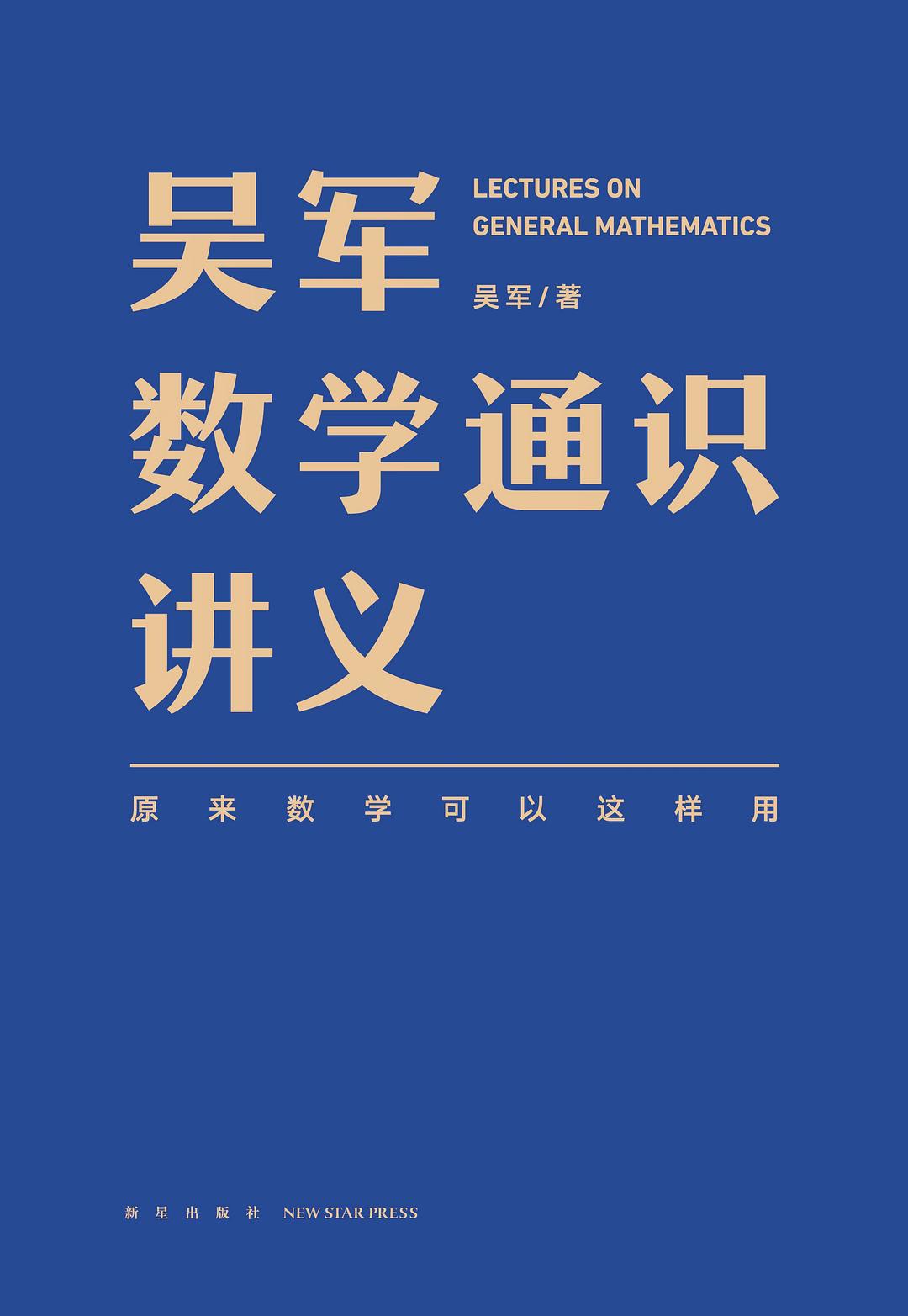WULOLIFE
《吴军数学通识讲义》副标题: 原来数学可以这样用 作者: 吴军
《吴军数学通识讲义》副标题: 原来数学可以这样用 作者: 吴军
Couldn't load pickup availability
Description
内容简介 · · · · · ·
如何一眼识破庞氏骗局、做好理财、投资?如何在购房贷款时做出最优选择?如何增加简历通过初筛的率?如何规划公司的发展曲线?更重要的是,如何提升自己的认知水平?如何改变自己的思维方式?
如果你也关注这些问题,希望借助数学思维来更好地提升自己、认知世界,这本书希望你一定要看。
串联起整个数学体系,帮助你逐步建立起属于自己的数学知识结构。而贯穿全书的数学其实就是人类认知的发展史,你可以借此逐步训练自己的认知:从随意到确定再到随机。
对于理工专业的读者,这本书能够帮助你更好地梳理以往的数学知识,站在更高的地方更全面地看待数学以及人类知识体系;对于非理工专业的读者,则能更好地训练自己的数学思维,让你直击本质、化繁为简,做出正确的决策。
作者简介 · · · · · ·
吴军
他的著作《数学之美》荣获国家图书馆第八届文津图书奖、第五届中华优秀出版物奖,《文明之光》被评为2014年“中国好书”, 《浪潮之巅》荣获“蓝狮子2011年十大极佳商业图书”奖。
吴军博士曾经担任谷歌研究员,设计了谷歌中、日、韩文搜索算法以及谷歌的自然语言分析器。201 0—2012年担任腾讯负责业务的副总裁,后回到谷歌负责计算机自动问答项目。
吴军博士自2008年开始从事风险投资,并于2014年作为创始合伙人创立了硅谷丰元资本风险投资基金。他也是上海交通大学客座研究员和约翰•霍普金斯大学工学院董事。
目录 · · · · · ·
前言009
基础篇第 1 章 理解数学的线索:从毕达哥拉斯讲起
1.1 为什么在西方叫毕达哥拉斯定理 022
1.2 数学拉斯定理的推论 030
1.3 数学思维:如何从逻辑出发想问题 036
1.4 黄金分割:数学和美学的桥梁 045
1.5 华罗庚化繁为简的神来之笔 058
第 2 章 数列与级数:承上启下的关键内容
2.1
2.2 列变化:趋势比当下重要 075
2.3 Chapter 079
2.4 等比得一倍回报 092
第 3 章数学边界:数学是万能的吗
3.1 数学大定理 104
3.2 从希尔伯特第十问题讲起 108
数字篇第 4 章方程:新方法和新思维
4.1 Page 116
4.2 一元三次方程的解法:数学史上著名的发明权之争 126
4.3 Description 135
第 5 章无穷大和无穷小:从数值到趋势
5.1 Notes: 143
5.2 无穷破解 149
5.3 第二次数学危机:顿和贝克莱的争论 156
5.4 Page 163
5.5 动态趋势:大小吗 171
几何篇第 6 章 基础几何学:公理化体系的建立
6.1 几何数学中最古老的分支 186
6.2 公理化体系:几何学的系统来 194
第 7 章 几何学的发展:开创不同数学分支融合的先河
7.1 Page 205
7.2 圆率:数学工具的意义214
7.3 解析几何:如何用代数的方法解决几何问题221
7.4 体系律提供理论基础 232
代数篇第 8章函数:重要的数学工具
8.1 Chapter 244
8.2 因果关性的差别 253
第 9 章 线性代数:超乎想象的实用工具
9.1 数量的方向与合力的形成 262
9.2 Chapter 278
9.3 Chapter 284
微积分篇第 10 章 微分:如何理解宏观和微观的关系
10.1 Share 300
10.2 微分:描述微观世界的工具 307
10.3 奇性的基础 312
第 11 章 积分:从微观变化了解宏观趋势
11.1 积分:微分的逆运算 323
11.2 积分的意义:从细节了解全局 327
11.3
11.4
*11.5 体系的完善:微积分公理化的过程 348
概率和数理统计篇第 12 章 随机性和概率论:如何看待不确定性
12.1 概率论:一门来自赌徒的学问 364
12.2 古典概率:拉普拉斯对概率的系统性论述 366
12.3 Chapter 371
12.4
第 13 章 小概率和大概率:如何资源共享和消除不确定性
13.1. 为什么保险公司必须有很大的客户群386
13.2 高斯分布:大概率事件意味着什么 393
*13.3 概率公理化:理论和现实的统一 404
第 14 章 前提条件:度量随机性的新方法
14.1 前提条件:条件对随机性的影响 415
14.2 差异:概率、联合概率和条件概率 421
14.3 相关性:条件概率在信息处理中的应用 430
14.4 机器翻译是怎样工作的 433
第 15 章 统计学和数据方法:准确估算概率的前提
15.1 定义:什么是统计学 442
15.2 实践:怎样做好统计 446
15.3 古德 - 图灵折扣估计:如何防范黑天鹅事件 450
15.4 统计是一种方法论 459
终篇第 16 章 数学在人类知识体系中的位置
16.1 数学和哲学:一头一尾的两门学科 468
16.2 数学和自然科学:数学如何改造自然科学 474
16.3 为什么逻辑是一切的基础 480
16.4 为什么数学是更底层的工具 486
16.5 Years 493
附录附录 1 黄金分割等于多少 497
附录 2 为什么斐波那契数列相邻两项的比值收敛于黄金分割 498
附录 3 等比级数求和算法 500
附录 4 一元 N 次方程 x N =1 的解 501
附录 5 积分的其他两种计算方法 503
附录 6 大数定律 505
附录 7 希尔伯特退休讲演的英文译文 507
终篇第 16 章 数学在人类知识体系中的位置
21.1 数学和哲学 /458
21.2 数学和自然科学 /465
21.3 数学和逻辑学 /469
21.4 数学和其他学科 /473
21.5 著名数学家希尔伯特退休前的讲演 /478
